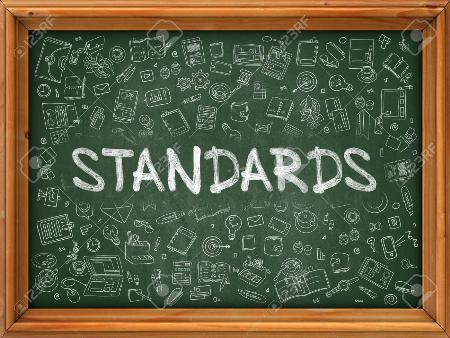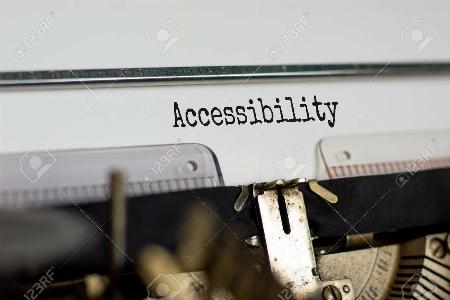I was introduced to Jakob Nielsen in the late 90s.

A usability expert who co-founded the Nielsen Norman Group with Dr. Don Norman . Their website was, and still is, an excellent source of information on UX. If I am in doubt, that is where I go.

His article “Legibility, Readability, and Comprehension: Making Users Read Your Words” significantly influenced me. It came out on November 15, 2015. During that time, I was having difficulties with the two jobs I had. I worked full-time as a UX/UI Designer and taught part-time in web design at a local college in central Florida.
The article provided me with a new approach to presenting my designs. Instead of leading with why a design was created using art terms (such as unity, focal point, etc.) or UX terms (Fitts’ Law, Hick’s Law, Law of Proximity, etc.), I started with legibility, readability, and comprehension. This was an easier bridge to cross when explaining the process. This also helped answer the question, “How do we start?” or “Where do we start?”
I took it directly from the article, which explains how the content must survive a “cost-benefit analysis” from users. When I started doing this, people who made decisions about which designs to use better understood the design process, as I was using terms they were familiar with. Since they were, more often than not, businesspeople rather than artists or designers, this approach was practical.
Additionally, Jakob emphasized the importance of clear and accessible web content to ensure users engage with and understand the information presented. He identified three critical factors influencing content usability:
- Legibility
- Readability
- Comprehension
Legibility: Make Your Text Easy on the Eyes
Legibility refers to the ease with which characters or words can be seen and recognized on the screen. If people can’t read your text easily, they’ll move on. Jakob calls this the lowest-level consideration in content usability. I see it as the foundation. You can have the best content, but no one will know if they cannot understand the characters. So what can you do?
- Pick the Right Font Size: Go big enough so readers aren’t squinting. Give them the option to enlarge text if needed. For instance, body text should ideally be 16px (1 rem) or larger. Don’t be afraid to go larger with text on the desktop (1920 x 1080). I generally recommend 20px (1.25 rem). You want to avoid cramming too much text into tight spaces. Remember, there are more senior citizens online today, and that number is expected to increase over the next twenty years. Even young users like having large text. Everyone wins.
- Boost Contrast: Dark text on a light background works best. Avoid busy or patterned backgrounds that fight for attention. For example, black text on a white background is a safe bet, while gray text on a gray background is hard to read.
Note: Please keep in mind that this was written in 2015. Since then, studies have found that individuals with Dyslexia have problems with too much contrast. The contrast between black and white has a contrast ratio of 23:1.
According to my training and other readings, it is suggested that you reduce the contrast between 17:1 and 19:1. This will help remove the sharpness of the white and black.
- Choose Clear Fonts: Stick with simple, clean typefaces. Fancy fonts might look cool, but they can slow readers down. Arial, Verdana, and Georgia are reliable choices. Avoid fonts with excessive flourishes or decorative swirls.
If you’re unsure how readable your text is, watch how users react. Are they leaning closer to the screen or struggling to follow along? That’s your cue to improve things. Watch what they do, not what they say.
Readability: Say It Simply
Readability is about using words and sentences that are easy to follow. If your writing feels like a puzzle, readers will give up.
- Use Plain Language: Big words aren’t impressive if they confuse your audience. Go with words people know. Instead of “utilize,” say “use.” Swap “commence” with “start.”
- Keep It Short: Short sentences are easier to digest. If you use commas like they’re going out of style, consider breaking things up. For instance, “Our product improves efficiency, increases accuracy, and reduces errors” can become three shorter points instead.
- Go for Active Voice: “We updated the site” sounds more evident than “We have updated the site.” For example, “Download the guide” beats “The guide can be downloaded here.”
- Guide Your Readers: Organize content with headings, lists, and white space. People love to skim, so make it easy for them. For example, a bulleted list of product features is more straightforward to scan than a long paragraph describing them.
Are you unsure if your content meets the mark? Try readability tools. They’ll score your writing and suggest improvements.
Comprehension: Help Readers Get the Point
Even if your text is easy to read, that doesn’t mean people will understand it. Here’s how to make your content stick:
- Add Examples and Visuals: Real-life examples, images, or diagrams can simplify tricky ideas. For instance, if you’re explaining a password reset process, include a screenshot of the reset button. If describing color contrast rules, show examples of good and bad combinations.
- Stick to Consistent Terms: Don’t switch between “users,” “customers,” and “clients” unless there’s an apparent reason. It’ll just confuse people. For example, suppose you call someone a “member” in one section and a “subscriber” in another. In that case, they may think you’re talking about different groups.
- Introduce Info Gradually: Don’t dump everything on your readers at once. Break things into steps or sections to keep it manageable. For instance, a multi-step tutorial with one instruction per step is easier to follow than a giant wall of text.
- Use Interactive Elements: Summaries, quizzes, or clickable highlights can make your content more engaging. For example, a short quiz reinforcing key points or a clickable glossary can boost understanding.
Beyond the Basics of Legibility, Readability, and Comprehension: Making Content Usable
Legibility, readability, and comprehension are key — but they’re just the start. If you really want users to engage with your content, consider these tips too:
- Answer the Big “Why?” What’s in it for your readers? Show them why they should care. For example, “Learn these tips to save time and boost your site’s impact.”
- Reduce Effort: Don’t make readers jump through hoops. Simple navigation and clear instructions go a long way. For instance, “Click here to get started” is more apparent than “Proceed to the next step by clicking the following link.”
- Prioritize Accessibility: Follow accessibility guidelines so everyone — including those with disabilities — can access your content. Use alt text for images and ensure links are descriptive, like “Download Report” instead of “Click here.”
Combining these strategies allows you to create clear, engaging, and easy-to-remember content. After all, what good is great content if no one sticks around to read it?
Resources:
- Legibility, Readability, and Comprehension: Making Users Read Your Words, Jacob Nielsen, Nov 15, 2015
- 7.3 Legibility and Readability in Typography, Jul 2024
- Readability vs. Legibility, Ben Long, Oct 15, 2024
- Best Font for Online Reading: No Single Answer, Jakob Nielsen, April 24, 2022
- Readability: The optimal Line Length, Edward Scott, May 2022
- How are readability, legibility, and comprehension, and plain language connected? Cheryl Stephens, Sep 2, 2021
- A Guide to Understanding What Makes a Type face Accessible, Gareth Ford Williams, Aug 14, 2020
- The Readability Formula: Making Your Website Easy-to-Read, Emma Butler
- I am an Inclusive Designer, Stuart Neiman
Tools



